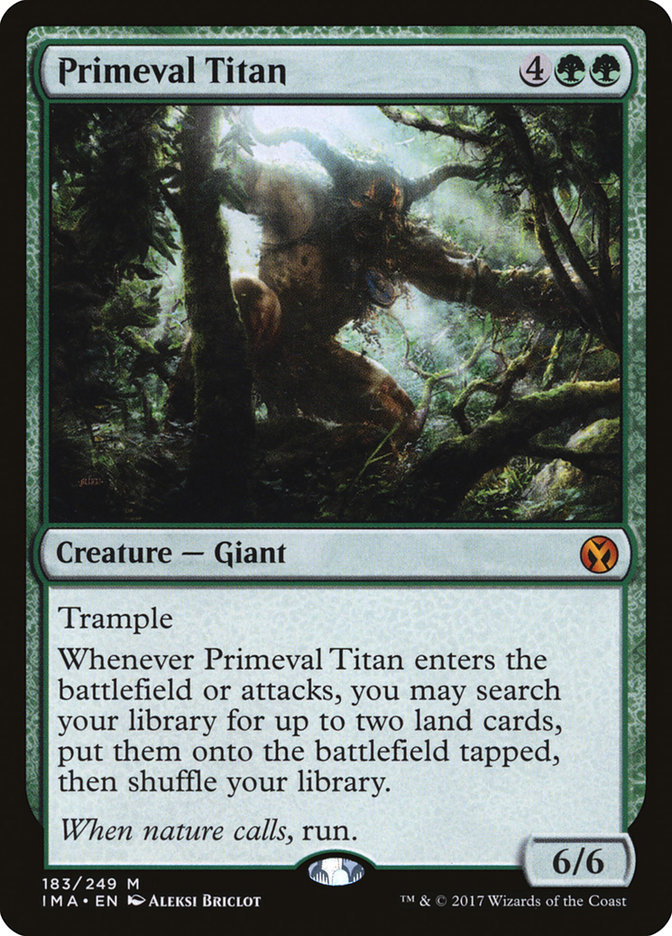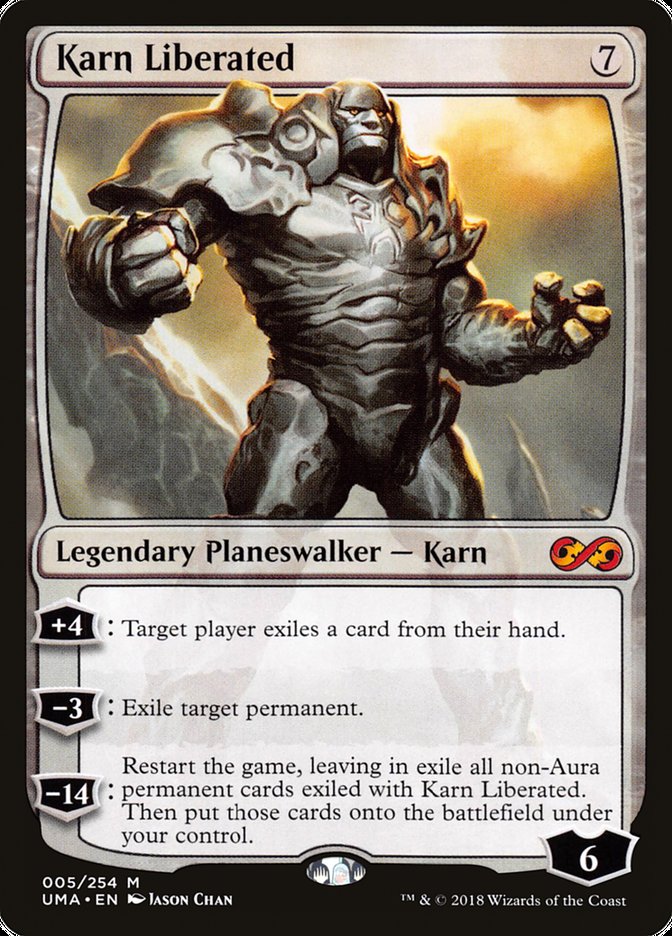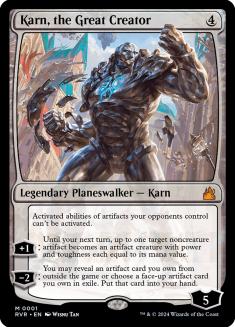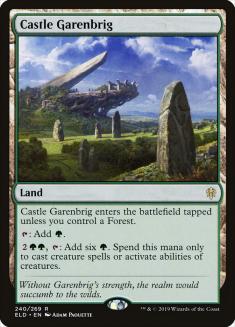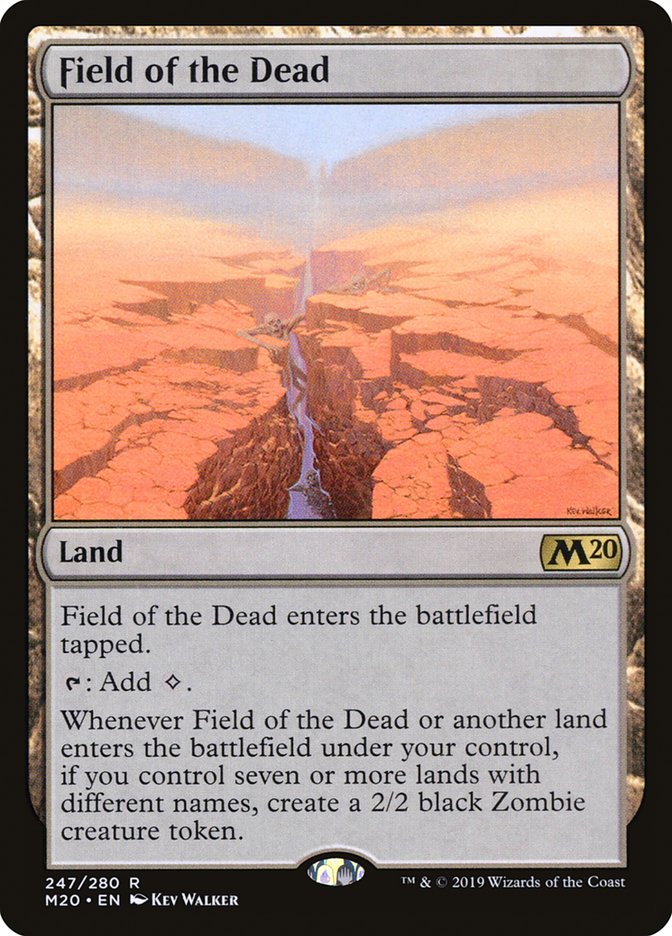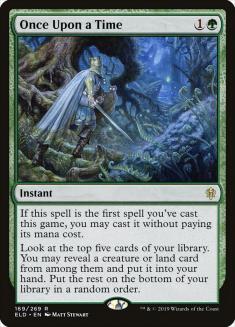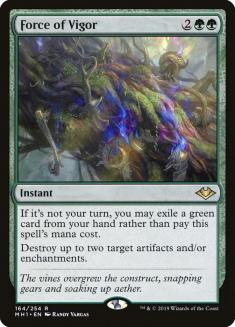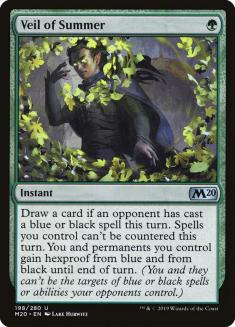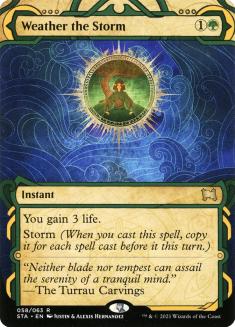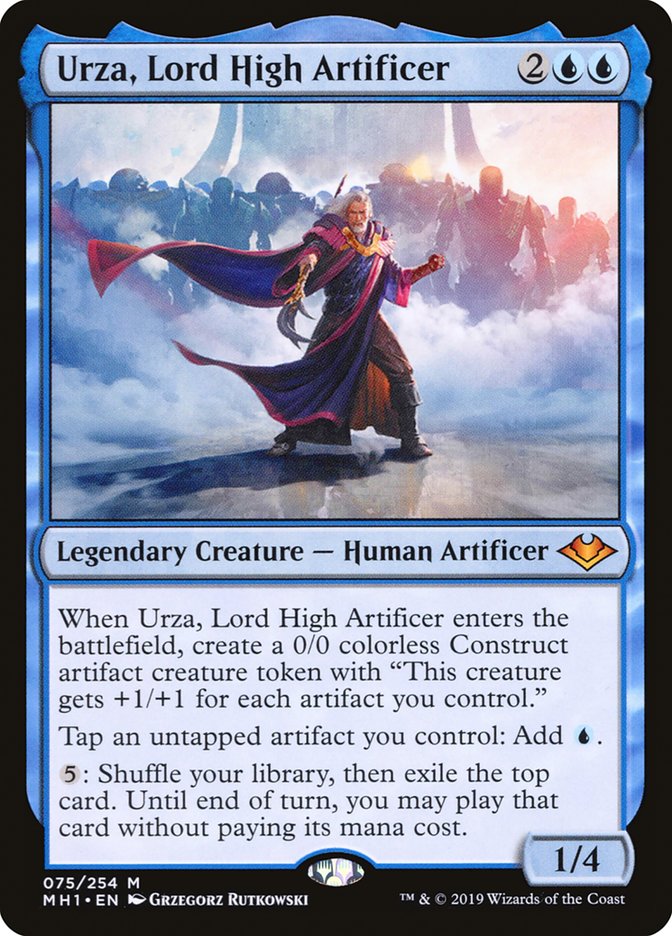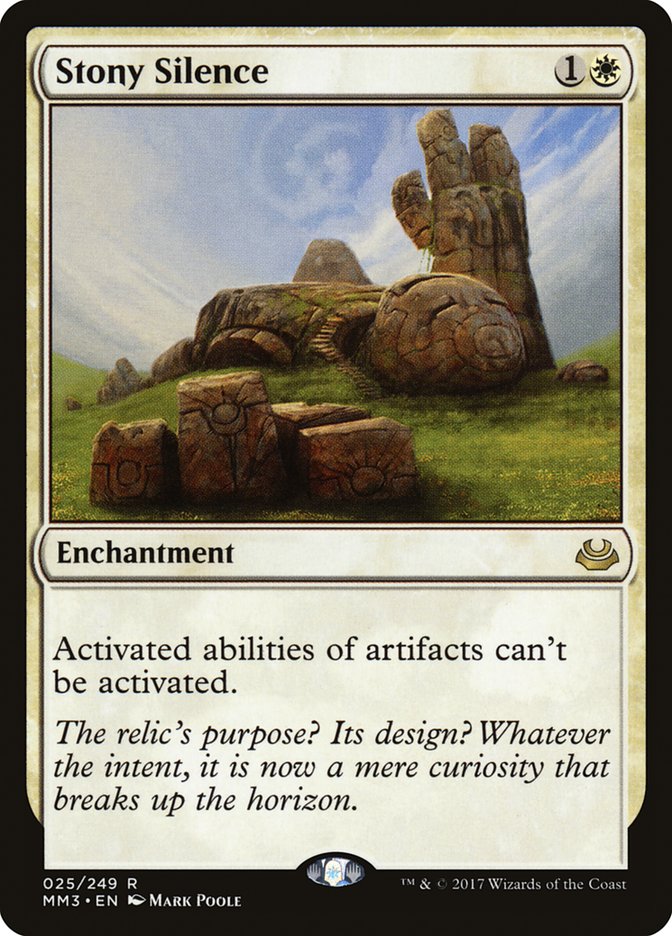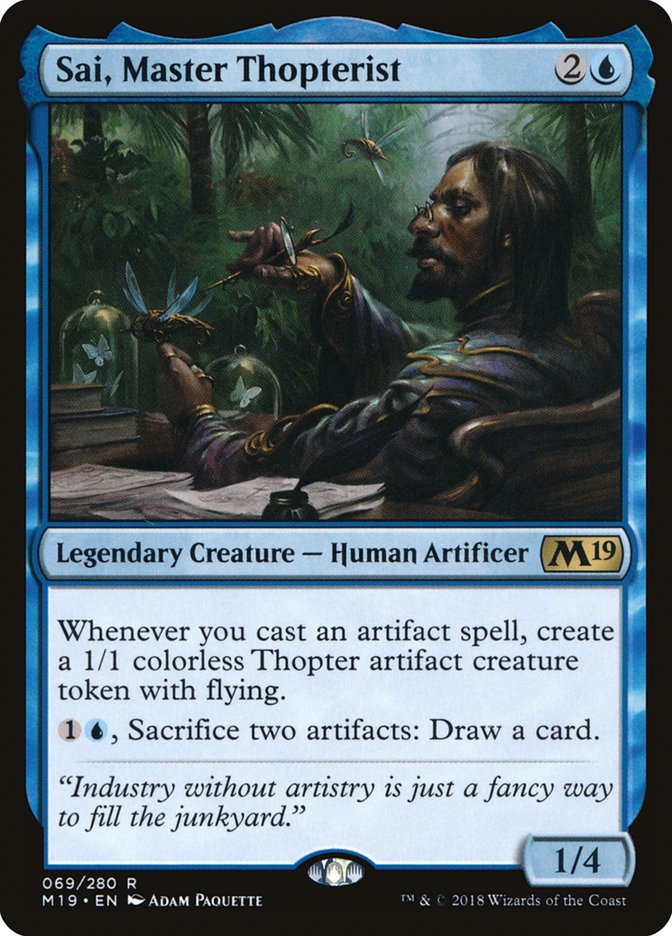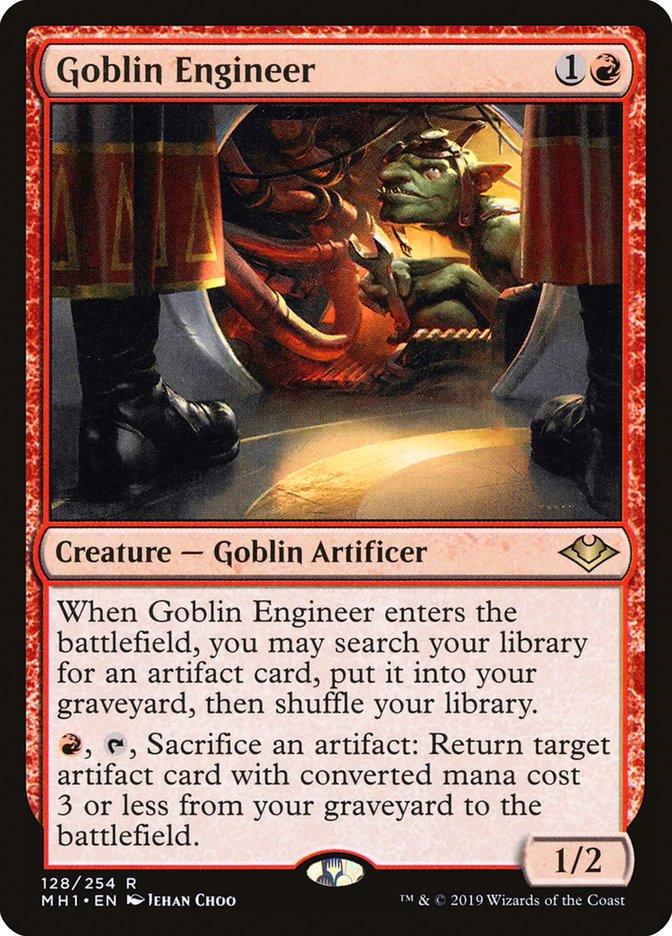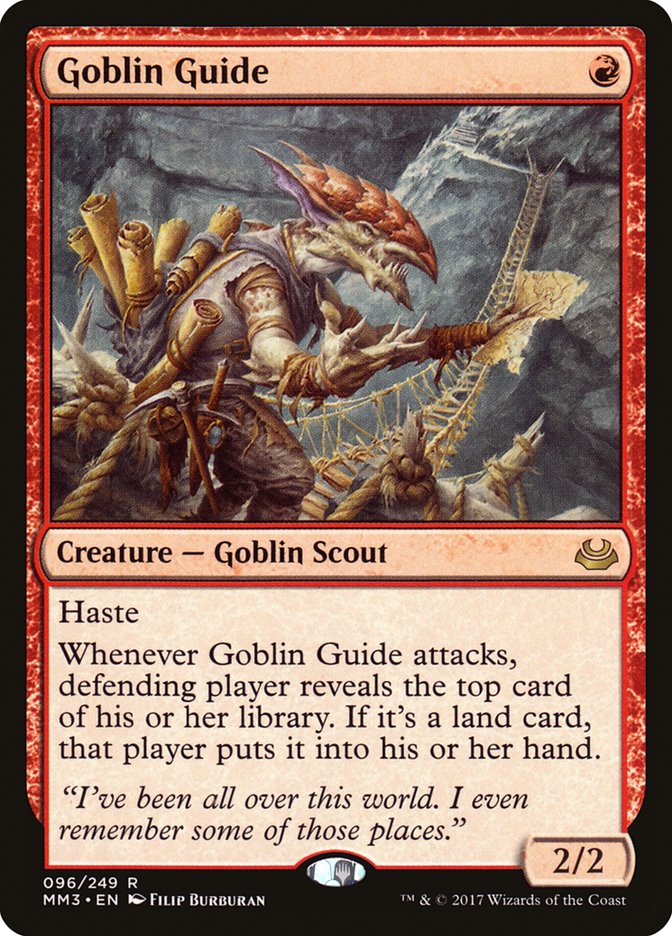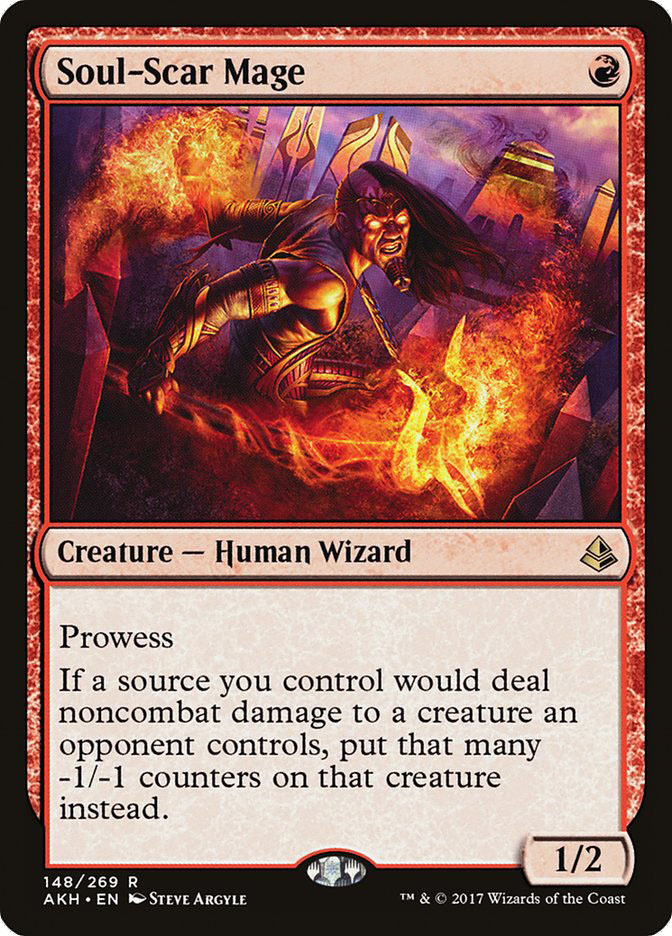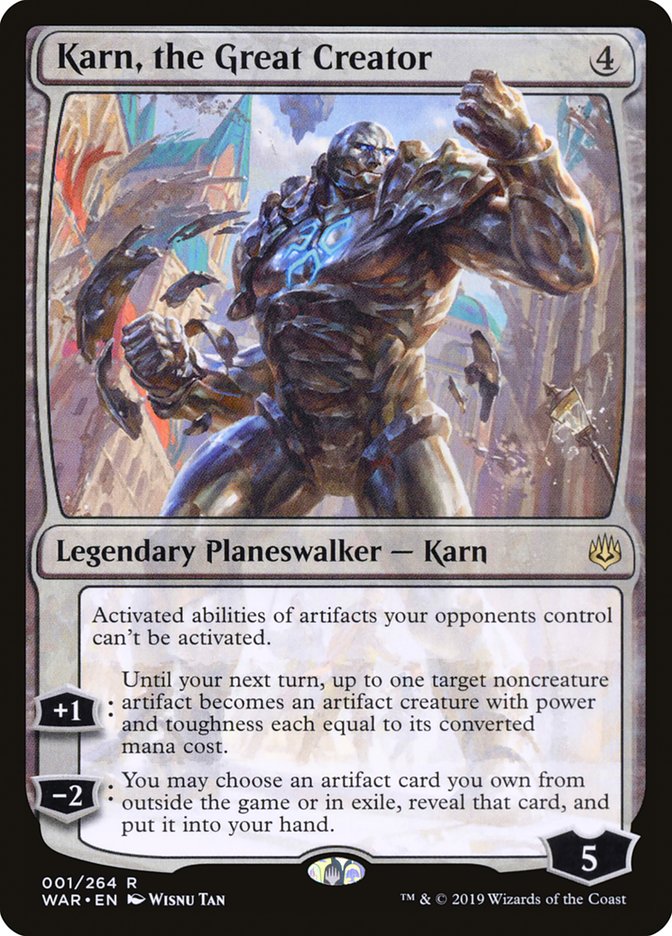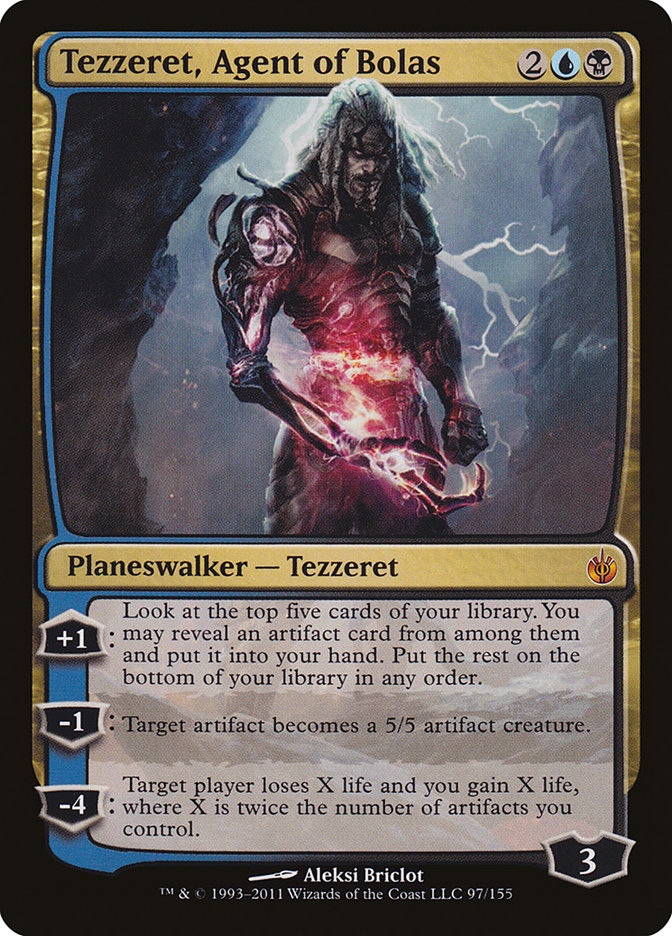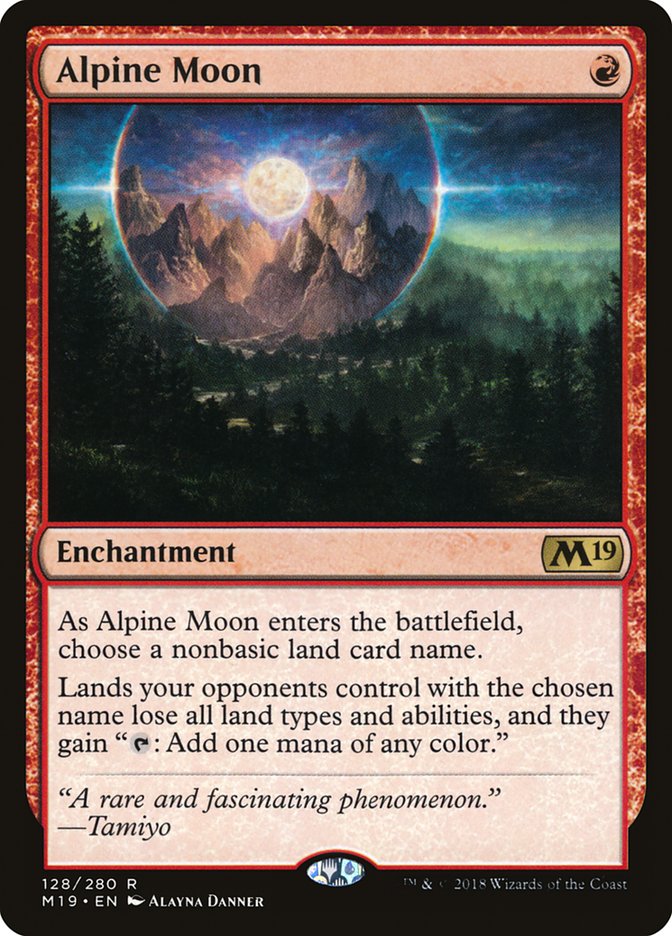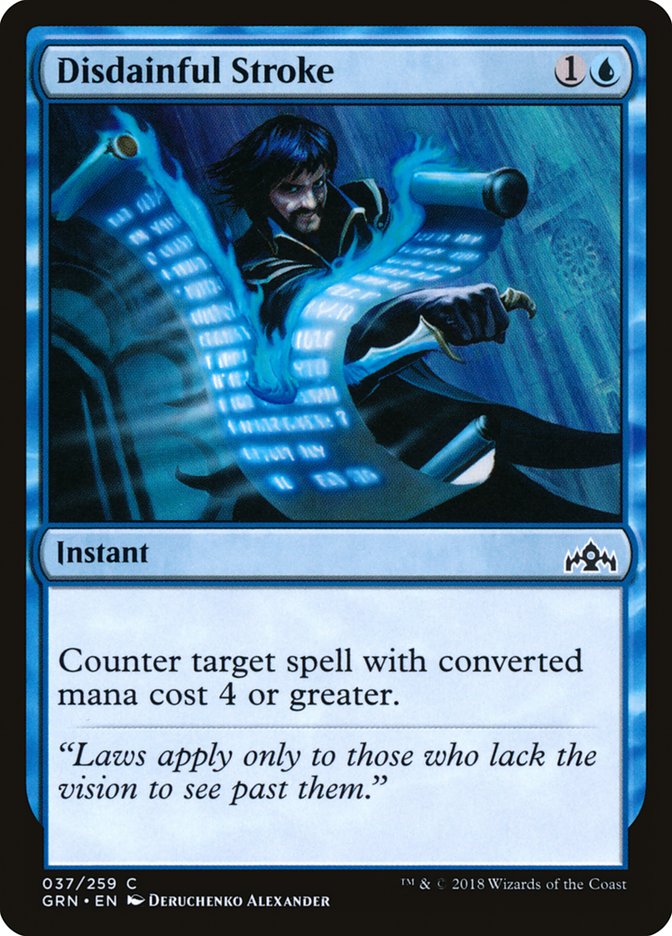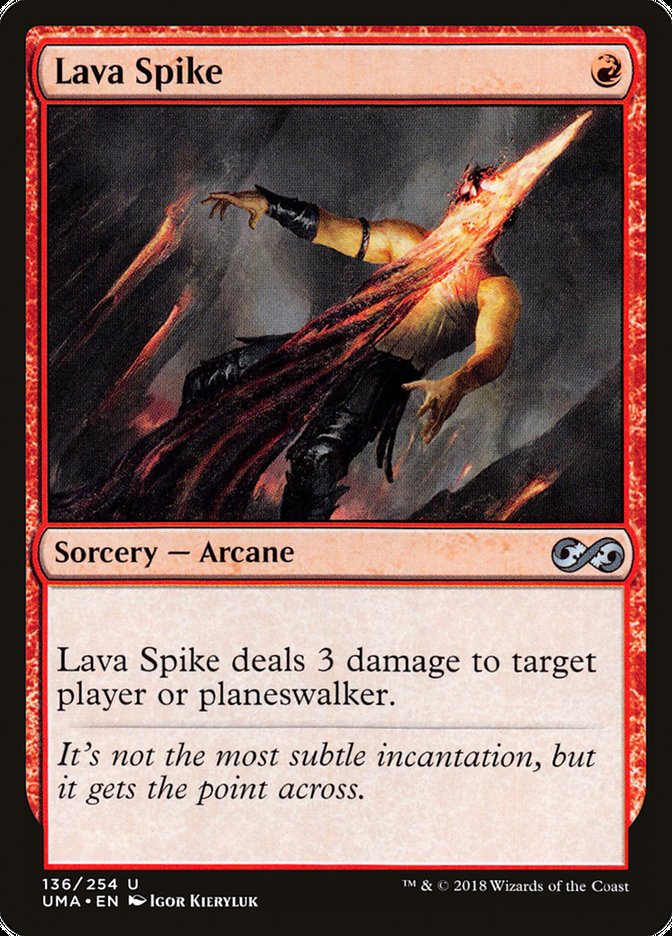Successful decks in a format are defined by the context in which they live and their ability to compete. That’s a lot of complex verbiage to effectively say “Good decks are good because they can beat what other people are playing.” Obvious stuff, right?
It’s all obvious in hindsight, but it isn’t always clear what exactly the proverbial boxes to check are. With Modern having recently been shaken up by War of the Spark, Core Set 2020, Modern Horizons, and even Throne of Eldraine, Modern’s been in a near-constant state of flux for almost six months now. It’s not what we’ve come to expect from our non-rotating formats, but it’s the world we’re currently living in.
Historically, there’s been a single archetype that is a bit above the rest. Generally, it’s a group of cards that is defined around a pillar of the format, and those cards just operate on a level that other things can’t compete with – think Faithless Looting decks for the earlier portion of this year. In a lot of respects, it felt like the world was simply waffling between Izzet Phoenix and Bloodghast decks, while trying to adapt accordingly.
Today, there isn’t so much a single pillar of the format that’s dominating everything, but there are overarching strategies that are appearing more commonly than others. Ignoring these archetypes is a surefire way to find oneself in the grabbing-lunch bracket after losing the first few rounds.
Take for example the fact that big-mana strategies are bigger in Modern than they ever have been before. Why?
For starters, they’ve received a slew of new toys in the last few months:
Big-mana strategies being prevalent in the format means one thing in particular: long games aren’t going to favor other decks. This makes it difficult to be anything reactive, or a deck that needs a large amount of time in order to win. Decks like Azorius Control and Jund might exist, but they’re going to have a hard time against a good chunk of these strategies without some seriously pointed disruption. It isn’t an accident that Fulminator Mage is the card to consistently show up in the form of a playset in Jund sideboards, or that Field of Ruin is a staple in Azorius Control.
So what does that mean? It means that being proactive is a necessity right now. Have a plan to kill people before they’re able to put eight lands onto the battlefield or generate enough mana to start slamming mythic rare colorless spells every turn. Sometimes this is going to mean having a faster goldfish than the big mana decks, and sometimes it’s going to mean having enough disruption to fight through the redundancy of the big-mana strategies. What’s most important is that you’re always working towards favorably ending the game, one way or another.
In a similar vein, Urza has shifted the efficacy of hate against artifact decks.
Previously, cards like Stony Silence were close to lights out against the likes of Affinity, Hardened Scales, and Lantern Control. Urza has completely shifted that, as he gives use to artifacts that would have otherwise been nullified. Further, Urza acts as a game-ending threat that will win on his own and isn’t affected by most of the cards that would traditionally be used to fight against artifact strategies.
Most importantly, he gives artifact decks both a way to both close the game with an 8/8 Construct when there isn’t anything on the other side of the battlefield and a way to dig towards answers to hate cards when that’s the best way to fight things.
Urza isn’t the only nonartifact threat that’s making its way into artifact decks these days:
Sai, Master Thopterist is a card that Ironworks used to morph into a fair-ish shell that could simply use Sai as Young Pyromancer-meets-Fecundity in order to power through traditional forms of artifact hate and punish players for not respecting nonartifact permanents. Goblin Engineer doesn’t operate in quite the same way, but it invalidates the pointed artifact removal that’s simply trying to operate as above-rate disruption rather than leaning into prison elements.
So what does that mean?
Similar to big-mana decks, one of the best ways to beat artifact decks is by working towards an end-game in addition to trying to disrupt them. One of the reasons that Jund has historically lined up so well against Mox Opal strategies isn’t because of Kolaghan’s Command. It’s because of Tarmogoyf.
Jund’s M.O. is casting a Thoughtseize on Turn 1, casting a threat on Turn 2, and then reducing the opponent’s resources while applying pressure.
On that note, most of today’s disruptive decks are labeled after their threats rather than their disruption. Grixis Death’s Shadow, Azorius Stoneblade, and so on are all decks that use their namesake to try to end the game, but they’re rarely using that card to play the entire game. Their games are actually defined by their disruption packages:
Back in 2017, when Death’s Shadow decks took the form that we’re used to seeing them today, Modern warped over the course of six months. What happened was a sort of mandatory redundancy in the format. This was because the Thoughtseize decks had reached a point at which they were good enough at picking apart the important cards that decks that were lacking in redundancy would simply die while they were trying to rebuild.
Things haven’t changed since then. One of the biggest draws to the big-mana and artifact strategies of the format is that they commit a ton of their maindeck to simply executing their own plan. This makes is hard for a single Thoughtseize or a removal spell to knock either of these strategies out of the game.
On the topic of proactivity and redundancy, Lightning Bolt is likely the best it’s been in the last two or three years, largely in part because Lava Spike is the best it’s ever been.
Creatures (12)
Lands (20)
Spells (28)
- 4 Lightning Bolt
- 4 Lava Spike
- 4 Lightning Helix
- 4 Rift Bolt
- 4 Searing Blaze
- 1 Skullcrack
- 4 Boros Charm
- 3 Skewer the Critics
Sideboard

Ever since the printing of Fiery Islet and Sunbaked Canyon, red aggro decks have been on a consistent uptick, with the primary reason being that they check all the boxes that have been talked about in this article. While also checking those boxes, it’s presenting another one; albeit one that’s pretty one the nose: Don’t fold to Burn.
It’s a simple test that’s been around as long as the format has but rears its ugly head as soon as people stop adequately respecting the fact that playing a pile of fetchlands and shocklands isn’t actually free. Not doing anything for the first two turns isn’t a reliable way to stay in a game.
Applying the Rules of Engagement
Taking all of this into account isn’t easy. There’s a lot. That being said, there are plenty of micro-decisions in-game and in deckbuilding that can go a long way toward minimizing the effect that other decks can have on your own game.
Whenever big-mana strategies greatly outweigh grindy, fair strategies, it’ll be better to reduce the number of slots dedicated towards long games.
Historically, several linear decks have committed cards to their sideboards that were meant to help go long against the slower things of the format. That isn’t a winning strategy when the decks that are going long are either dealing enormous chunks of damage with Valakut, the Molten Pinnacle or completely disabling all of the opponent’s spells with Mycosynth Lattice.
Instead, try looking into disruption that either works as a tempo play to bridge the gap between you and the phase of the game that your deck can power through a big-mana deck’s plays or traps the big-mana strategy in the early-game.
Against artifact decks, stop expecting an Ancient Grudge or Stony Silence to put the nail in the coffin. At this point, you should just leave in creature removal so long as it deals with the creatures in the opposing deck. Tagging a Goblin Engineer with a Fatal Push is almost as good as a Shatter. Using a Dismember or a Fatal Push on one of the blue 1/4s can be the difference between remaining at parity in a game and being buried.
Refine your decks and have a plan. Assume that if you’re building your deck towards executing a specific plan, it’s a good enough plan to slant your entire deck towards. The more focused a strategy is, the better it’s going to be against disruption.
Stop building decks that can’t do anything in the first couple of turns. If your deck demands having a couple of turns to set up, make sure you have some sort of card that lets you recoup early damage. It might be in the form of lifegain or simply ending the game, but hoping the opponent isn’t able to deal twenty points of damage in a game without being interacted with isn’t a winning strategy.
***
Every single format has these sorts of pieces that make them tick. Nothing is without context and learning to discover these pieces for yourself is a serious level-up moment in deckbuilding. Some of it is a bit more of a given, but one of the biggest things to note is that all of the most successful decks in the format will have their own ways of passing the above tests. That’s why they’re winning.
The secret to finding new decks in a format is simply looking for a needle in the haystack that happens to fit all the necessary categories in a format. Sometimes it isn’t that hard to find – it’s just a matter of taking what other people know and figuring out how to capitalize on that.


